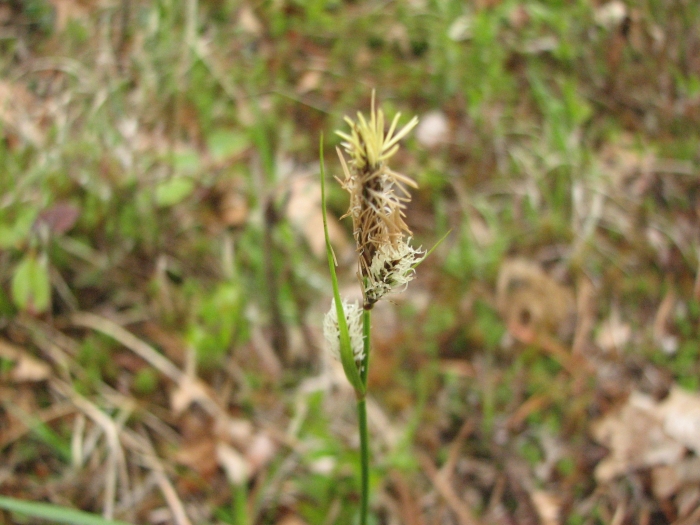Variable Sedge
(Carex polymorpha)
Variable Sedge (Carex polymorpha)
/
/

Chris Hoess
CC BY-SA 4.0
Image By:
Chris Hoess
Recorded By:
Copyright:
CC BY-SA 4.0
Copyright Notice:
Photo by: Chris Hoess | License Type: CC BY-SA 4.0 | License URL: http://creativecommons.org/licenses/by-sa/4.0/ | Rights Holder: Chris Hoess | Publisher: iNaturalist | Date Created: 2012-05-06T12:19:05-07:00 |
















Estimated Native Range
Summary
Carex polymorpha, commonly referred to as Variable Sedge or Many Forms Sedge, is a perennial herbaceous plant native to moist meadows, wetlands, and riparian zones in North America, particularly in the northeastern United States. It is an endangered species in several states, including Connecticut, Maine, Massachusetts, New Jersey, Rhode Island, and Virginia, and is both endangered and extirpated in Maryland, as well as threatened in New Hampshire and Pennsylvania. Variable Sedge typically grows to a height of 10-60 cm and forms dense clumps with narrow, grass-like leaves. The inconspicuous greenish-brown flowers appear in late spring to early summer and are not particularly showy, but they do contribute to the plant’s natural charm in a native garden setting.
Variable Sedge is valued for its ability to thrive in wet conditions and is often used in rain gardens, wet meadows, and as a stabilizer for stream banks and slopes. It is also appreciated for its low maintenance requirements and its role in supporting local ecosystems, providing habitat and food for wildlife. In cultivation, it prefers consistently moist to wet soils and can tolerate a range of light conditions from full sun to part shade. While it does not have significant disease or pest issues, its main threat comes from habitat loss and competition with invasive species. Due to its endangered status, it should be sourced responsibly, and gardeners are encouraged to use this plant to support conservation efforts.CC BY-SA 4.0
Variable Sedge is valued for its ability to thrive in wet conditions and is often used in rain gardens, wet meadows, and as a stabilizer for stream banks and slopes. It is also appreciated for its low maintenance requirements and its role in supporting local ecosystems, providing habitat and food for wildlife. In cultivation, it prefers consistently moist to wet soils and can tolerate a range of light conditions from full sun to part shade. While it does not have significant disease or pest issues, its main threat comes from habitat loss and competition with invasive species. Due to its endangered status, it should be sourced responsibly, and gardeners are encouraged to use this plant to support conservation efforts.CC BY-SA 4.0
Plant Description
- Plant Type: Grass
- Height: 1-2 feet
- Width: 1-2 feet
- Growth Rate: Slow
- Flower Color: N/A
- Flowering Season: Spring, Summer
- Leaf Retention: Deciduous
Growth Requirements
- Sun: Part Shade, Full Shade
- Water: Medium, High
- Drainage: Fast, Medium
Common Uses
Low Maintenance, Water Garden
Natural Habitat
Moist meadows, wetlands, and riparian zones in North America, particularly in the northeastern United States
Other Names
Common Names: Manyform Sedge
Scientific Names: , Carex polymorpha, Carex halseyana, Carex halseyi, Carex striata, Carex striata, Loxotrema halseyana,
GBIF Accepted Name: